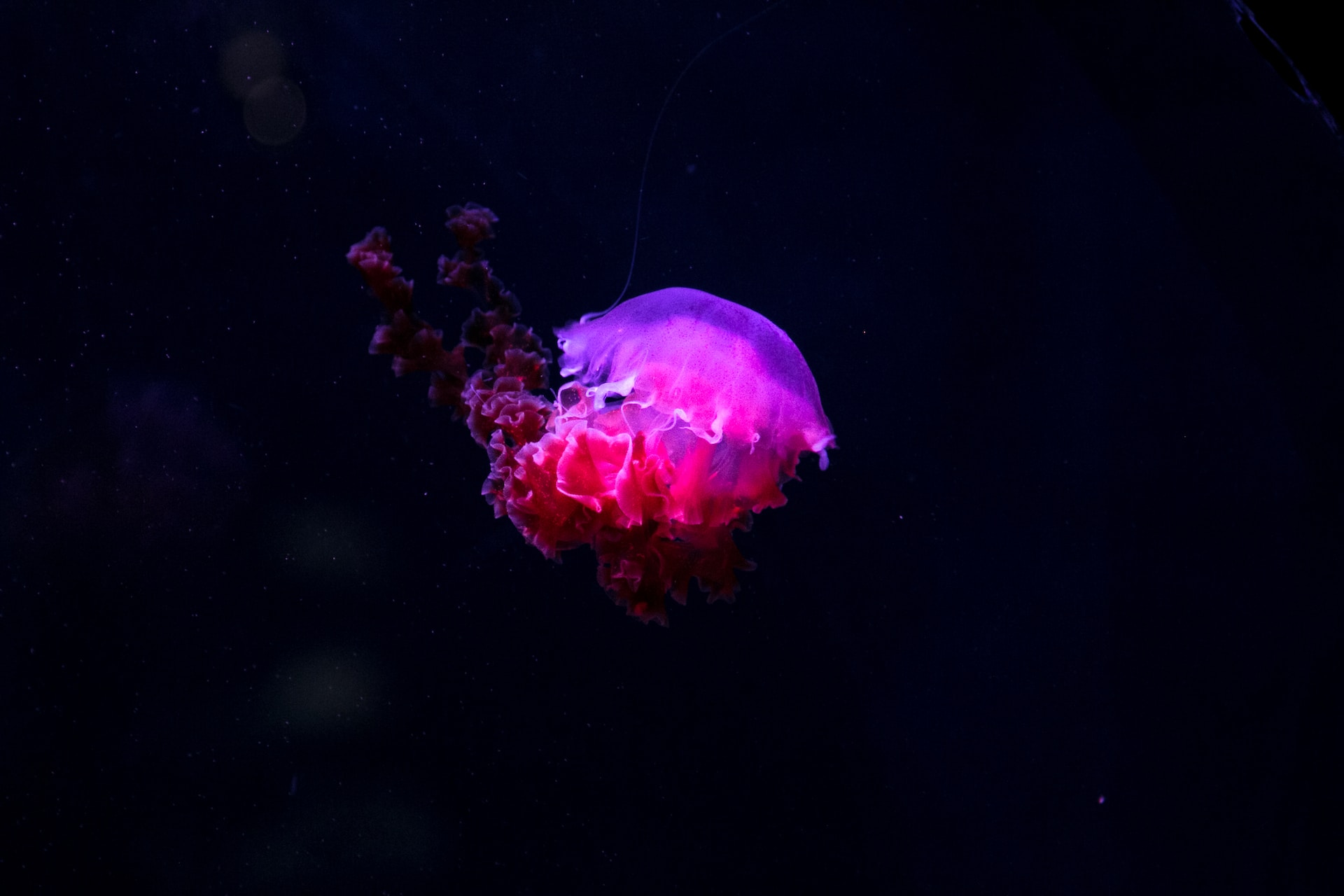
Top 10 Weird Sea Creatures From the Deep Ocean
We are reader-supported. When you buy through links on our site, we may earn affiliate commission.
Did you know scientists discover new weird sea creatures every year? Thousands of previously unknown species have been uncovered far below the ocean’s surface.
With the help of exploration robots, scientists are recording some incredible new aquatic animals living in the darkest regions of the sea. What are some of the strangest creatures scientists have discovered so far in the midnight zone and beyond?
1. Anglerfish
No list of weird sea creatures is complete without the anglerfish. This spooky deep sea fish was made popular for its appearance in Finding Nemo, featuring the angler’s iconic head lamp. In real life, a clownfish would rarely bump into anglerfish, since they live in very different parts of the ocean.
Most anglerfish are found in the deep sea up to a mile below sea level. There are over 200 recorded species of anglerfish, but all have the species’ bioluminescent lure dangling from their heads.
However, no male anglerfish have the iconic lure. Many species of male anglerfish are tiny parasites only a few centimeters long. All pictures of large anglerfish with the lure and huge teeth are females.
2. Gulper Eel
The gulper eel earns its place among the top weird sea creatures from the deep ocean due to its odd shape. Most of its body is the eel’s giant mouth, which is why its nickname is the “pelican eel”. The gulper eel uses its big mouth to swallow prey whole and mainly feeds on squids. The eel’s stomach can expand, as well, allowing it to eat prey larger than its own body size.
This strange eel is found in oceans all over the world and lives up to 6,000 feet below sea level. Interestingly, the gulper eel has a unique bioluminescent lure on the end of its tail, much like the lure found on angler fish. The length of the tail allows the eel to move its lure right next to its mouth so it can easily swallow prey once in range.
3. Enypniastes Sea Cucumber
The enypniastes sea cucumber has several nicknames, including the “pink see-through fantasia”, the “swimming sea cucumber” and the “headless chicken monster”. Its appearance is just as strange as its array of nicknames. This sea cucumber has a transparent pink oblong body with see-through skin that leaves its few interior organs visible.
Swimming sea cucumbers have frills around their bodies known as “veils”, which allow them to swim in open water unlike most other sea cucumbers. Tentacles at one end of the sea cucumber’s body help it move around on the seafloor, where it gets its primary food source, sediment.
The pink see-through fantasia can be found over 3,000 feet below sea level. Even in the darkness of the midnight zone, this quirky sea cucumber may still be easy to spot since its pink body can have a bioluminescent glow.
4. Blobfish
Voted the “World’s Ugliest Animal” in 2013, the Blobfish has become one of the most well-known weird sea creatures discovered in the deep ocean. Interestingly, the most famous photos of the Blobfish aren’t representative of what it actually looks like and show a dead specimen.
The Blobfish lives in the midnight zone of the ocean about 4,000 feet below the surface. Down there, the pressure is over 120 times what we experience at sea level. Many deep sea creatures don’t have normal skeletons or muscles because they would be crushed at this depth.
This is the case with the Blobfish. When brought to the surface, its body basically collapses in on itself, giving it the “ugliest animal” look it’s known for. In its natural habitat, it looks like a fairly normal fish.
5. Squidworm
The “squidworm” might sound like a creature from a monster movie, but it’s very real, albeit very strange. It has a long, thin body coated in white spines with a head surrounded by curling, translucent tentacles. It may only be 4 inches long, but the squidworm is creepy enough to number among the deep sea’s top weird sea creatures.
The squidworm was discovered in 2007 using a robotic exploration vehicle operated by scientists from the Woods Hole Oceanographic Institution. It resides in the midnight zone, typically found between 600 and 3000 feet below sea level.
6. Black Swallower
The Black Swallower is shaped like it has a suitcase in its gut… and it might! This fish has an extended gut that allows it to swallow prey larger than the Black Swallower itself. They top out at about 10 inches long, but they’re capable of swallowing whole fish that are twice their length. Black Swallowers live in the twilight zone and the deeper midnight zone.
7. Barreleye “Spookfish”
The barreleye or “spookfish” stands out even among weird sea creatures. This odd fish has a transparent head and glowing barrel-shaped eyes. It sounds like science fiction, but these fish have been observed live.
The barreleye has tubular eyes that are designed mainly to look upward. The fish’s transparent head protects its eyes from predators and prey with stingers. This allows the barreleye to swim under its prey, jellyfish, and search for them without worrying about stingers getting at its tubular eyes.
8. Nudibranch Sea Slugs
Nudibranchs are a colorful and diverse type of sea slug with over 3000 distinct species on record so far. They almost remind one of Pokemon creatures, appearing in a wide array of vibrant patterns and unique, jelly-like shapes. They’re not very big, though, often less than an inch in length.
Nudibranchs may be squishy, but they’re not harmless. They often have toxins in small tentacles on their bodies and some even reuse the toxic stingers of their prey. Nudibranchs can be found all over the world’s oceans at a variety of depths.
9. Marrus orthocanna Jellyfish
It’s easy to mistake the Marrus orthocanna jellyfish for a diagram of a rocket or some sci-fi spaceship. At first glance, its central orange canal and frills look like a plume of fire. This is actually the body stem and stingers of a colony jellyfish made of numerous zooids, smaller multicellular creatures.
The Marrus orthocanna is born from a single egg that grows into a protozoan. This protozoan duplicates to form the many zooids making up a single colony attached by the creature’s orange body stem. The zooids of the jellyfish resemble upside down lightbulbs.
Although the Marrus orthocanna was discovered in 1942, scientists still don’t know much about it. However, they do know that it mainly lives in the Arctic ocean up to 2,600 feet below sea level, in the midnight zone. They can grow to be 3 to 6.5 feet long.
10. Yeti Crab
The peculiar yeti crab is one of the most popular weird sea creatures, known for its fuzzy body. It was first discovered in 2005 off the coast of Easter Island in a hydrothermal vent, an underwater crack in the sea floor where heat from beneath the Earth’s crust wells up.
Yeti crabs are among the deepest dwelling sea creatures on record, first found over 7,000 feet below sea level. This puts them below the Abyss in the trenches at the bottom of the ocean floor.
Considering how far from the sun they live, it may come as no surprise that yeti crabs have no eyes and colorless bodies. They grow to about 6 inches long and scientists hypothesize that they mainly live on bacteria.
Discovering Weird Sea Creatures
The world’s deep ocean regions are full of incredible, weird sea creatures we have yet to discover. Scientists find new species every year, usually with the help of underwater robots capable of withstanding the intense pressures thousands of feet below sea level. There’s still a lot of exploring left to do, too – an estimated 80% of the ocean remains uncharted!
Share on
Like what you read? Join other Environment.co readers!
Get the latest updates on our planet by subscribing to the Environment.co newsletter!
About the author

Steve Russell
Steve is the Managing Editor of Environment.co and regularly contributes articles related to wildlife, biodiversity, and recycling. His passions include wildlife photography and bird watching.





